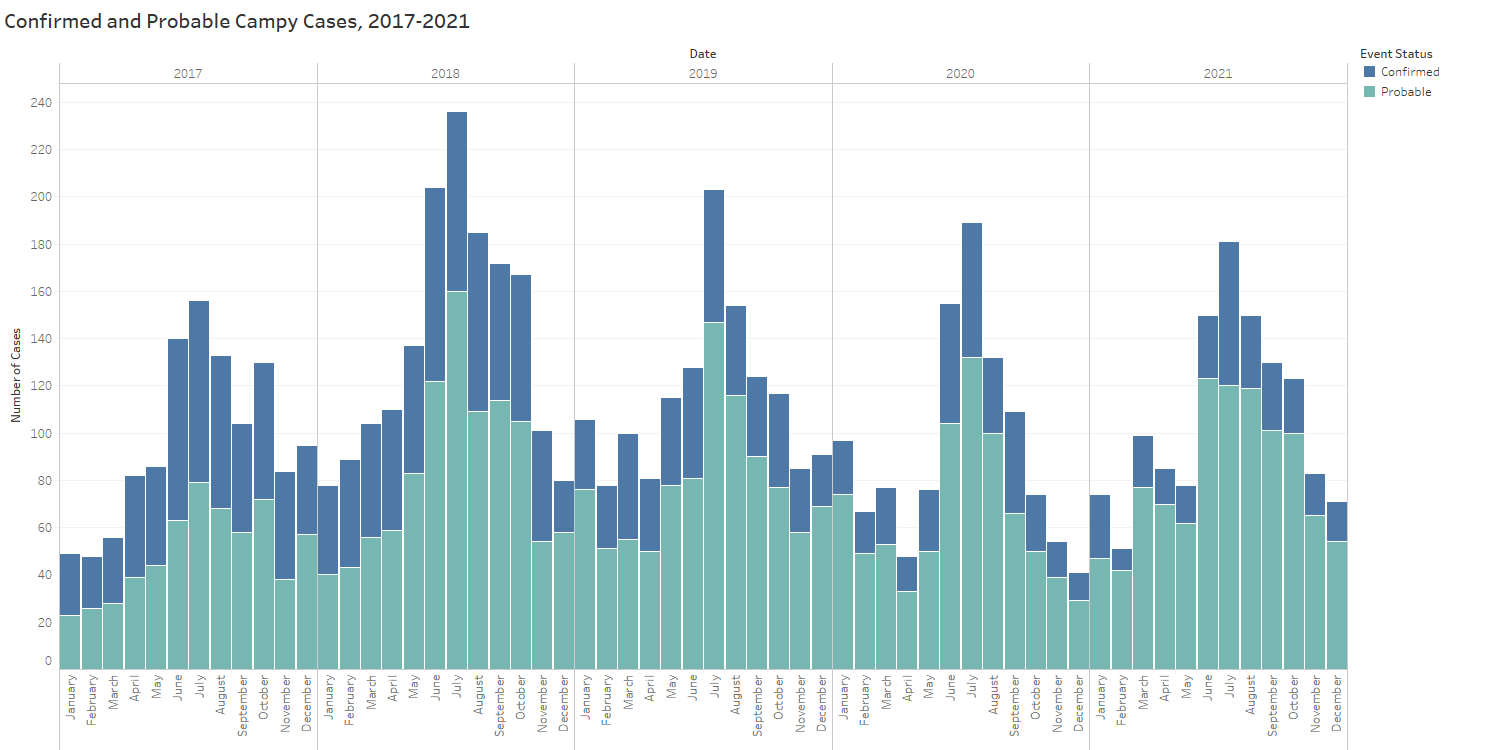Campylobacter
Definition
Campylobacteriosis (often called campy) is a diarrheal disease caused by infection with the bacterium Campylobacter. It is the most common cause of diarrheal disease in the United States. 2.5 million cases are estimated to occur annually. Most often the illness is fairly mild and requires little to no treatment other than hydration and rest. However, Guillain-Barre syndrome and reactive arthritis are two long-term complications that have been linked to campylobacteriosis.
Campylobacteriosis is reportable to the Iowa Department of Public Health by Iowa Administrative Code 641 chapter 1.
Symptoms
On average it takes between 2-5 days after being infected with Campylobacter before symptoms begin to appear. Symptoms tend to decline about a week after they began. The most common signs and symptoms include:
- Diarrhea (sometimes bloody)
- Abdominal pain
- Fever
- Nausea
- Vomiting
These symptoms can range from mild to appendicitis-like illness in severe cases. In a few rare cases, long-term complications can follow the normal progression of the disease and include:
- Guillain-Barre Syndrome - a rare disease that affects the nerves of the body beginning several weeks after the diarrheal illness. This illness results in paralysis that lasts several weeks and usually requires intensive care
- Arthritis
Causes
Campylobacteriosis is caused by the ingestion of the Campylobacter bacteria found in food or water sources that have been contaminated with animal or human feces. Other common causes include:
- Improperly handling raw poultry
- Eating raw or undercooked poultry
- Eating or drinking unpasteurized dairy products
Risk Factors
People who are at higher risk of contracting campylobacteriosis include:
- People who regularly handle uncooked poultry or other meats
- Farmers who are in regular contact with infected animals
- Individuals who drink raw milk or eat unpasteurized dairy products
- Individuals who drink from untreated water sources
Prevention
- People with diarrhea should not go to school or work until diarrhea ends
- Always refrigerate poultry and meat products
- Always cook poultry completely (internal temperature of at least 165ºF)
- Avoid consuming unpasteurized milk and dairy products
- Carefully wash hands before and after preparing foods
- Avoid drinking untreated water
- Make sure children wash their hands carefully, especially after using the toilet, having diapers changed, or handling pets
- Always wash hands with soap and warm water after using the toilet or changing diapers
- Always wash food preparation surfaces and utensils between cutting up raw meat or poultry and other foods
Treatment
Rehydration and electrolyte replacement are the main treatments for campylobacter infections. In general, antibiotics are only used in severe cases, or with immunocompromised individuals who are at risk for greater complications. Make sure to consult with a healthcare provider if you have any questions about your health or before taking any anti-diarrheal medication.
Statistics
The total number of Campylobacter cases reported in 2021 in Iowa was 1,275. Campylobacteriosis incidence was 39.9 cases for every 100,000 people in 2021.
Campylobacteriosis activity typically peaks in early summer. Consumption of raw or undercooked meat, raw milk, contaminated water, and contact with infected animals are common sources of Campylobacter infection.
For more detailed information and statistics on all notifiable diseases, please see our current annual report.

Additional Resources
Public
Public Health
Schools
Business and Childcare
Health Care Providers